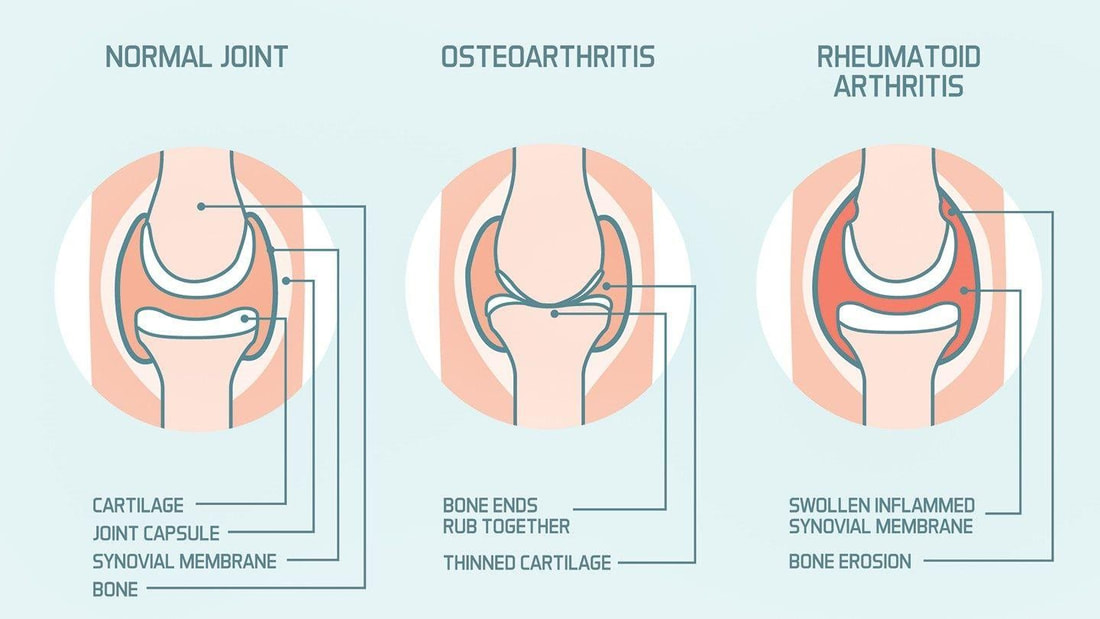 You have likely heard of many people saying they have OSTEOARTHRITIS (OA).. but what about RHEUMATOID ARTHRITIS (RA)? What’s the difference between the two? I’m glad you asked! Osteoarthritis is a disease that involves the WEAR AND TEAR of joints over time, causing the cartilage that surrounds and cushions our joints to break down. Rheumatoid Arthritis is an AUTOIMMUNE DISEASE causing the body’s immune system to attack itself. Often the fist sign of Rheumatoid Arthritis is not joint pain but rather fatigue, “flu-like” symptoms or weakness. Disease Causes: Both OA and RA affect the protective tissue that surrounds our joints and prevents bone on bone friction from occurring. Although each disease impacts this tissue through different methods. During OA as we age the protective cartilage around the joint wears down and bones begin to scrape across each other causing friction and pain. This wear and tear can happen generally due to age but repetitive movements, high impact sports and additional load/ weight on the joints can speed up this process. As RA is an autoimmune disease it is caused from a mutation in the body that mistakenly attacks the healthy joint tissue, breaking it down. This can occur at any age and can progressively worsen over weeks, months or years. Disease Symptoms: Common symptoms of both OA and RA include;
Where in the body am I most likely to get each disease? Both diseases can affect any joint within the body although OA is more likely to affect knees, finger/ thumb joints, the hips or spine. RA on the other hand frequently occurs in the hands, fingers, elbows, knees, feet and hips and will generally occur in the same joints on both sides of the body. Treatment/ Physical Therapies: In both OA and RA physical activity and treatment will assist in improving the condition of both diseases. This assists in increasing joint mobility and improving strength in surrounding muscles to decrease the load that is placed through the joint. To learn more about what specific movements can assist OA or RA, get in touch with a local Accredited Exercise Physiologist. For more information about arthritis and some exercises that may be appropriate, have a look at some of our previous blogs at http://www.optimumep.com.au/blog/category/osteoarthritis Aleisha Michael Accredited Exercise Physiologist.
0 Comments
Your comment will be posted after it is approved.
Leave a Reply. |
AuthorSLisa Parkinson Archives
July 2024
Categories
All
|

 RSS Feed
RSS Feed